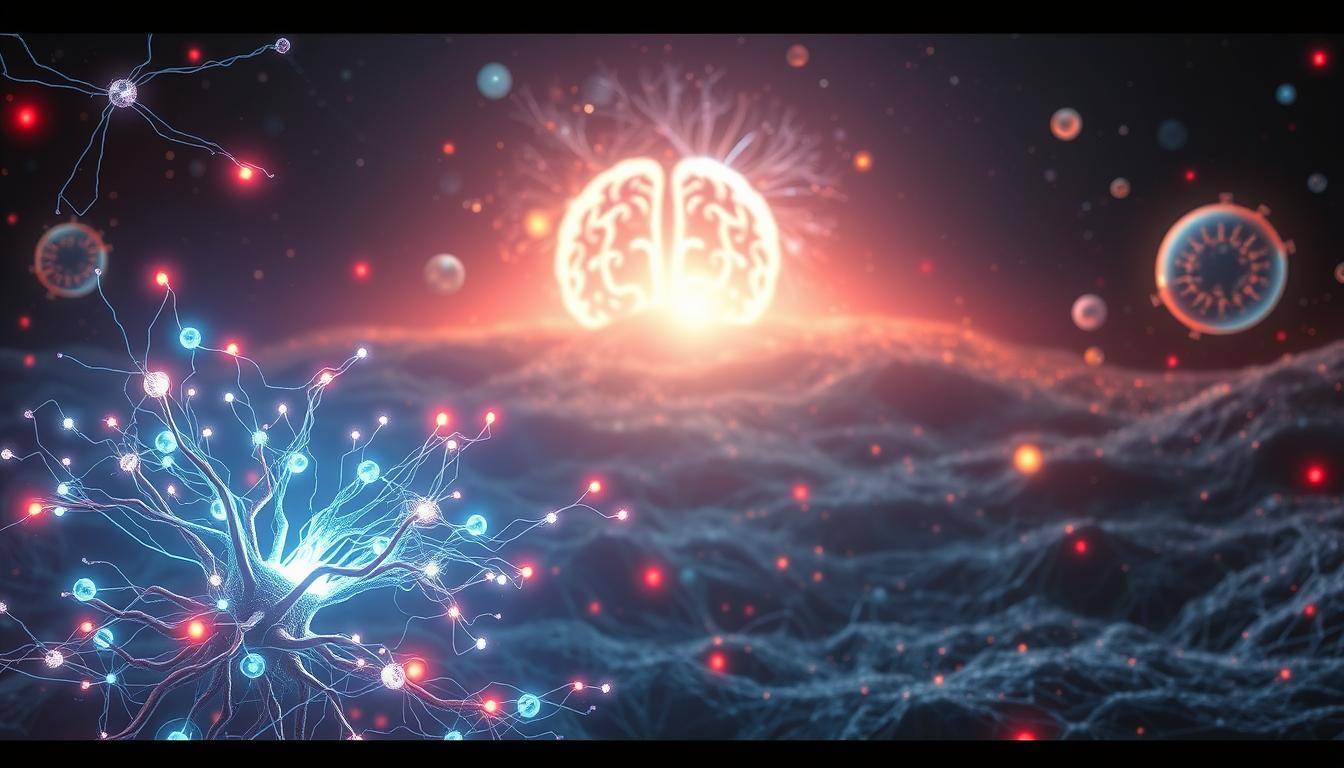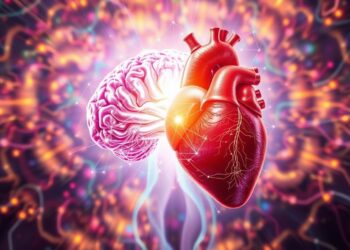The human brain has a remarkable ability to adapt and change throughout our lives. This concept, known as neuroplasticity, allows us to rewire our neural pathways and create new habits.
Our daily experiences and thoughts physically reshape our brain‘s architecture, giving us the power to direct our personal growth. By understanding how to harness neuroplasticity, we can break undesirable habits and create positive ones.
This ability to intentionally rewire our brain provides a scientific foundation for sustainable personal growth. As we explore the science behind this concept, we can unlock the potential for meaningful transformation.
Key Takeaways
- Neuroplasticity allows us to rewire our brain and create new habits.
- Our daily experiences and thoughts reshape our brain’s architecture.
- Harnessing neuroplasticity enables sustainable personal growth.
- Intentional brain rewiring can lead to positive habit formation.
- Understanding neuroplasticity is key to achieving personal transformation.
Understanding the Science of Neuroplasticity
Neuroplasticity refers to the brain’s remarkable capacity to reorganize itself in response to new experiences. This concept has revolutionized our understanding of the human brain, showing that it is not a fixed entity but rather a dynamic system capable of change throughout life.
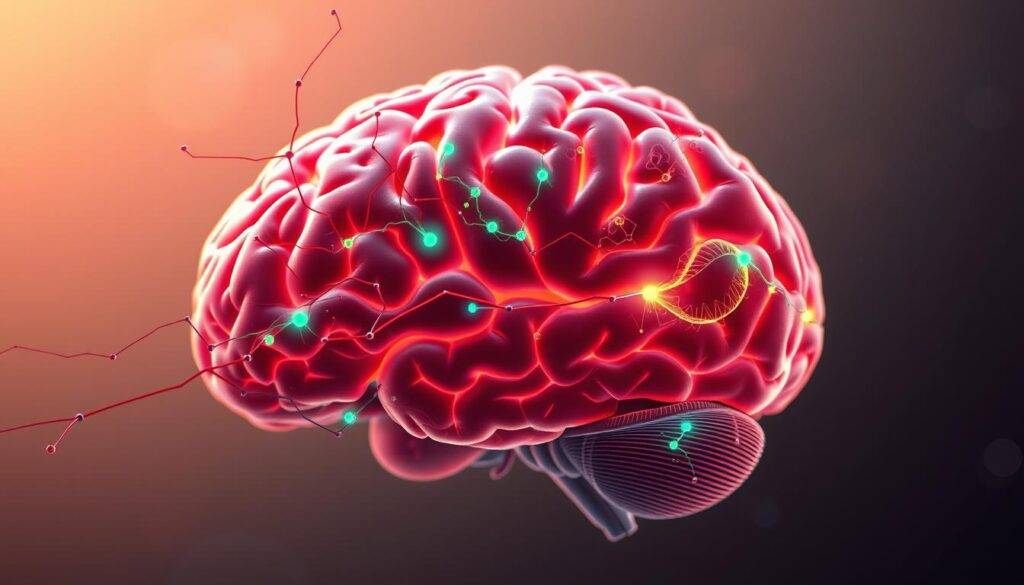
What Is Neuroplasticity?
Neuroplasticity is the brain’s ability to form new neural connections, allowing for adaptation and change. According to Hebb’s Law, “neurons that fire together, wire together,” meaning that the brain forms new connections based on how it is used.
This fundamental principle explains how repeated experiences and practices can lead to lasting changes in the brain. As the brain adapts, it strengthens the connections between neurons, creating more efficient pathways for information transmission.
Types of Neuroplasticity: Structural and Functional
There are two main types of neuroplasticity: structural and functional. Structural plasticity refers to changes in the physical structure of the brain, such as the formation of new neurons or the growth of new dendrites. Functional plasticity, on the other hand, involves changes in the way neurons communicate with each other.
- The brain produces thousands of new neurons daily through a process called neurogenesis, particularly in the hippocampus, an area critical for learning and memory.
- Brain imaging studies have shown visible structural changes in individuals who consistently practice specific skills, such as musicians or meditators.
- The prefrontal cortex, responsible for executive functions like decision-making and attention, shows robust plasticity in response to focused mental training.
The Neuroscience Behind Brain Changes
Neuroscientific research has revealed that the brain’s ability to change is rooted in its complex neural networks. When neurons repeatedly activate together, their connections strengthen through a process called long-term potentiation, creating more efficient neural pathways.
Neurotransmitters like dopamine play crucial roles in neuroplasticity by signaling which neural connections should be strengthened based on rewarding experiences. Understanding these neurological mechanisms provides the scientific foundation for intentionally directing our brain’s natural plasticity toward personal growth goals.
Self-Directed Neuroplasticity: Taking Control of Your Brain
Dr. Jeffrey Schwartz’s pioneering research has shown that we can actively shape our brain’s function through self-directed neuroplasticity. This concept challenges the long-held belief that our brain’s structure and function are fixed after a certain age. Instead, it suggests that we have the power to influence our neural pathways and brain chemistry through conscious effort and attention.
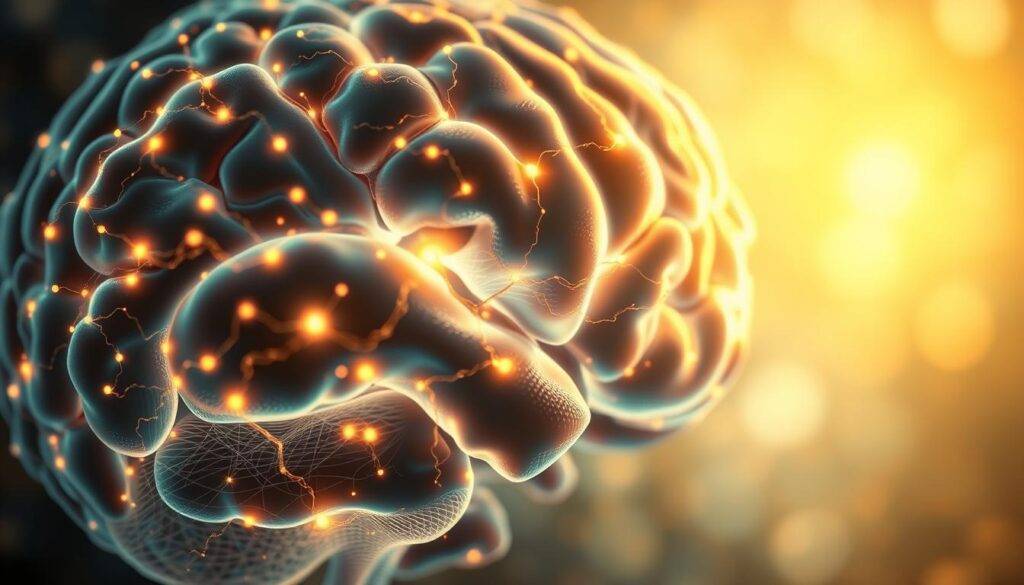
From Passive to Active Brain Change
Traditionally, it was believed that brain changes were largely passive, influenced by genetics and external factors. However, self-directed neuroplasticity turns this notion on its head by empowering individuals to take an active role in shaping their brain’s development. By doing so, people can move from being passive recipients of their brain chemistry to active participants in their neural development.
“The brain is not a static entity; it’s a dynamic system that can be reshaped through focused attention and mental effort.” This fundamental shift in understanding opens up new possibilities for personal growth, behavioral change, and improved mental health.
The Role of Intention in Rewiring Neural Pathways
Intention plays a crucial role in self-directed neuroplasticity. By consciously choosing where to focus our attention, we can influence our neural activity and, over time, rewire our brain’s pathways. For instance, if someone wishes to improve their social skills, they can achieve this by exposing themselves to social situations while focusing on feeling more comfortable. With consistent practice and attention, the brain’s neurochemistry adapts, making it easier to feel at ease in social settings.
Dr. Jeffrey Schwartz’s Research on Conscious Brain Change
Dr. Schwartz’s groundbreaking research on Obsessive-Compulsive Disorder (OCD) provided significant evidence for the effectiveness of self-directed neuroplasticity. His work demonstrated that patients could use focused attention and mental strategies to rewire their brains, challenging the deterministic view that brain chemistry dictates behavior. The four-step method developed by Dr. Schwartz – Relabel, Reattribute, Refocus, Revalue – showed that conscious attention could override powerful compulsions by creating new neural pathways.
- Dr. Schwartz’s research provided clinical evidence for self-directed neuroplasticity as an effective treatment approach for OCD.
- His work demonstrated that patients could rewire their brains using focused attention and mental strategies.
- Brain scans showed measurable changes in brain activity, particularly in the caudate nucleus, providing physical evidence of self-directed neuroplasticity.
This research has far-reaching implications beyond OCD treatment, suggesting that self-directed neuroplasticity can be applied to various aspects of personal growth and behavior change. By understanding and harnessing the power of self-directed neuroplasticity, individuals can take control of their brain’s development and shape their future.
The Neurological Basis of Habits and Personal Growth
By examining the neurological underpinnings of habits, individuals can gain insight into the mechanisms that govern their actions and make meaningful changes. Habits are automatic responses to specific cues, developed through repetition and reinforcement.
The formation of habits is closely linked to the brain’s ability to create and strengthen neural pathways. As we repeat certain actions or behaviors, the associated neural connections become more robust, making it easier for the brain to trigger these actions in the future.
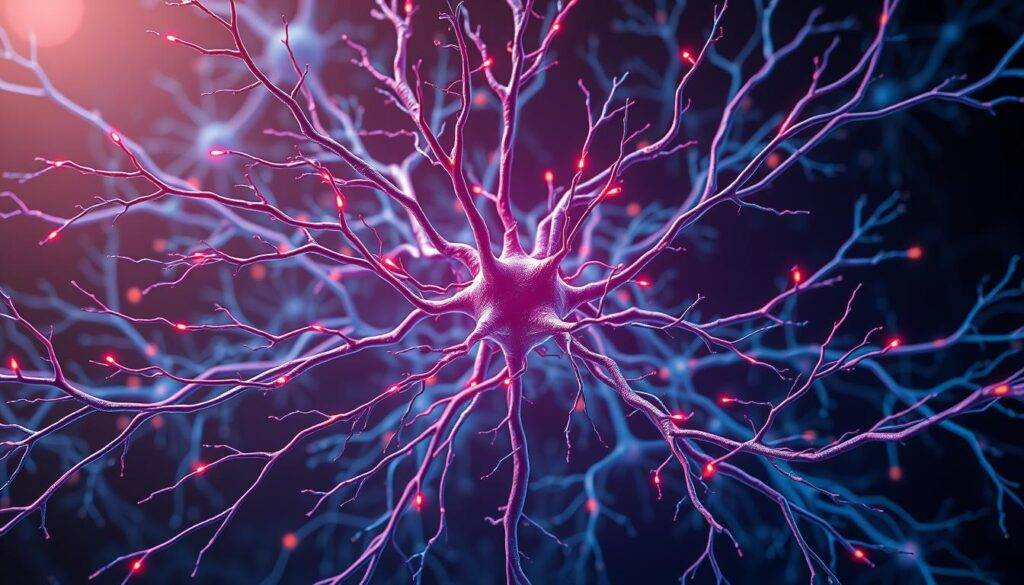
How Neural Pathways Form and Strengthen
Neural pathways are formed when neurons communicate with each other through synapses. The more frequently this communication occurs, the stronger the connection between the neurons becomes. This process is fundamental to learning and memory, and it plays a crucial role in the development of habits.
As we experience certain cues, our brain initiates a response based on the existing neural pathways. If the response is followed by a rewarding outcome, the neural pathway associated with that response is reinforced, making it more likely that the same response will occur in the future when faced with the same cue.
The “Neurons That Fire Together, Wire Together” Principle
This principle, often attributed to Donald Hebb, suggests that the simultaneous activation of neurons leads to a strengthening of their connections. In the context of habits, this means that the more we repeat a behavior in response to a specific cue, the stronger the neural pathway associated with that habit becomes.
Understanding the Habit Loop: Cue, Craving, Response, Reward
The habit loop, a concept popularized by Charles Duhigg, consists of four key elements: cue, craving, response, and reward. The cue triggers a craving, which motivates a response, and the response is followed by a reward. Understanding this loop is crucial for changing habits, as it allows individuals to identify and modify the underlying drivers of their behaviors.
- The cue triggers the brain to initiate a specific behavioral sequence by activating associated neural pathways.
- Cravings represent the motivational force that drives behavior, as the brain anticipates the reward.
- The response is the actual habit—the thought or behavior performed automatically when triggered by the cue.
- The reward delivers a hit of dopamine, reinforcing the neural pathway and teaching the brain to repeat the sequence.
By understanding the neurological basis of habits and the habit loop, individuals can develop effective strategies for changing their habits and promoting personal growth. This involves identifying cues, modifying responses, and finding alternative rewards to redirect the brain’s automatic processes.
Awareness: The Foundation of Self-Directed Neuroplasticity
Awareness is the cornerstone of self-directed neuroplasticity, enabling individuals to take control of their brain’s adaptability. It is the critical first step in making intentional changes to one’s thoughts, behaviors, and overall brain function.
Developing mindful awareness of thoughts and behaviors is essential for initiating the process of neuroplasticity. This involves paying attention to one’s mental states and actions without judgment, allowing for a deeper understanding of the underlying neural mechanisms.
Developing Mindful Awareness
Mindful awareness is cultivated through practices that encourage being present in the moment. This can involve meditation, mindfulness exercises, or simply paying closer attention to daily activities. By doing so, individuals can begin to recognize patterns in their thoughts and behaviors that may be hindering their personal growth.
The Role of Awareness in Creating Change
- Awareness creates a crucial pause between stimulus and response—a moment of choice that interrupts automatic neural firing patterns.
- This pause allows for the conscious evaluation of habitual responses and the selection of alternative pathways that better align with personal growth goals.
- Neuroscience research indicates that even brief moments of awareness can activate the prefrontal cortex, overriding automatic responses from more primitive brain regions.
The Observer Perspective
Becoming a witness to one’s mind is a powerful aspect of developing awareness. By adopting an observer perspective, individuals can detach from their immediate thoughts and emotions, gaining a broader understanding of their mental landscape.
The Power of Awareness in Neuroplasticity
| Awareness Aspect | Impact on Neuroplasticity | Benefit |
|---|---|---|
| Moment of Choice | Interrupts automatic neural patterns | Allows for conscious decision-making |
| Conscious Evaluation | Enables selection of alternative responses | Aligns actions with personal growth goals |
| Prefrontal Cortex Activation | Overrides primitive brain responses | Enhances self-control and decision-making |
How Awareness Creates Space for Change
Awareness is not just a passive observation; it is an active process that creates space for meaningful changes. By recognizing the cues, managing cravings, choosing different responses, or noticing rewards, individuals can interrupt the habit loop and foster new, healthier neural pathways.
The practice of awareness is fundamental to self-directed neuroplasticity. It empowers individuals to guide their brain’s changes consciously, rather than being subject to passive neuroplasticity. Regular practice of awareness expands the space between stimulus and response, giving individuals greater capacity to choose their actions and shape their personal growth.
Practical Techniques for Rewiring Your Brain
The brain’s ability to change and adapt can be harnessed using specific, actionable strategies. By applying these techniques, individuals can effectively rewire their brain to achieve desired outcomes and foster personal growth.
Meditation and Mindfulness Practices
Meditation and mindfulness practices are powerful tools for rewiring the brain. Regular meditation activity has been shown to alter brain structure and function, promoting positive changes in areas related to attention, emotion regulation, and memory. By incorporating meditation into daily routine, individuals can strengthen their brain’s ability to adapt and change.
Mindfulness practices, such as focusing on the present moment, can also contribute to neural plasticity. This increased awareness allows individuals to better recognize and manage negative thought patterns, leading to a more balanced brain activity.
Visualization and Mental Rehearsal
Visualization and mental rehearsal are techniques that involve using mental imagery to rehearse and prepare for various scenarios. By vividly imagining a specific task or outcome, individuals can strengthen the neural pathways associated with that activity. This can be particularly useful for improving performance in areas such as sports, public speaking, or other skill-based pursuits.
Regular visualization practice can also enhance motivation and confidence, as the brain begins to associate the visualized outcomes with real-life experiences. By dedicating a few minutes each day to visualization, individuals can harness the power of their brain’s neural plasticity.
Positive Affirmations and Self-Talk
The way individuals talk to themselves matters significantly in shaping their brain’s neural connections. Positive affirmations and self-talk can help rewire the brain by promoting a more positive and supportive internal dialogue. By consistently using positive language, individuals can strengthen the neural pathways associated with confidence, resilience, and motivation.
Environmental Cues and Habit Stacking
Modifying one’s environment can play a crucial role in rewiring the brain. By creating an environment that supports desired habits and behaviors, individuals can leverage the power of environmental cues to drive positive change. Habit stacking, a technique popularized by James Clear, involves building new habits onto existing ones, creating a powerful association between the two.
| Technique | Description | Benefits |
|---|---|---|
| Meditation and Mindfulness | Regular practice of meditation and mindfulness | Promotes positive changes in brain structure and function |
| Visualization and Mental Rehearsal | Using mental imagery to rehearse tasks or outcomes | Enhances performance, motivation, and confidence |
| Positive Affirmations and Self-Talk | Using positive language to promote a supportive internal dialogue | Strengthens neural pathways associated with confidence and resilience |
| Environmental Cues and Habit Stacking | Modifying the environment to support desired habits and behaviors | Drives positive change by leveraging environmental cues and associations |
By understanding and applying these practical techniques, individuals can take control of their brain’s neural plasticity, driving meaningful change and fostering personal growth. As the brain adapts and changes, new opportunities for development and self-improvement emerge, empowering individuals to achieve their goals.
The 5-Step Framework for Creating Lasting Neural Change
For those seeking to rewire their brains, a 5-step framework offers a practical guide. This structured approach empowers individuals to take control of their neural development, fostering lasting personal growth and transformation.
Discover Your “Why”
Understanding your core motivations is the first step. Identifying your “why” provides the foundation for meaningful change, as it connects your daily actions to your deeper life goals. This clarity of purpose helps maintain focus and direction throughout your journey.
Diagnose Obstacles and Friction Points
Recognizing the barriers to change is crucial. By diagnosing obstacles and friction points, you can develop targeted strategies to overcome them, ensuring a smoother path to neural reorganization. This step involves a honest assessment of your current habits and thought patterns.
Prescribe Personalized Solutions
Tailoring solutions to your specific needs and challenges is essential. This step involves creating a personalized plan that addresses your unique circumstances, enhancing the effectiveness of your efforts. It’s about finding the right tools and techniques that work for you.
Practice Consistently with Self-Compassion
Consistency is key to neural change. Practicing with self-compassion allows you to maintain a positive and resilient mindset, even in the face of setbacks. This involves being gentle with yourself and acknowledging that progress is not always linear.
Pause and Reflect to Strengthen Neural Connections
Reflection is a powerful tool for consolidating new neural pathways. By pausing to reflect on your efforts and results, you build new links in the brain, reinforcing your progress. This step is crucial for integrating new experiences and strengthening neural connections.
Research highlights the importance of reflection in strengthening neural pathways. This process activates the brain‘s default mode network, integrating new experiences and enhancing retention. Celebrating small wins during reflection releases dopamine, reinforcing new behaviors and motivating continued practice.
- Reflection consolidates new neural connections, transferring them from short-term to long-term memory.
- Regular reflection creates a positive feedback loop, increasing motivation and further strengthening neural connections.
- This process transforms unconscious learning into conscious understanding, creating more flexible neural networks.
Applying Self-Directed Neuroplasticity to Common Growth Goals
Self-directed neuroplasticity offers a powerful approach to reshaping one’s brain and achieving desired personal growth outcomes. By understanding how to apply neuroplasticity principles, individuals can tackle various challenges and improve their overall well-being.
One of the key areas where self-directed neuroplasticity can be applied is in overcoming negative thought patterns. By becoming more aware of their thoughts and emotions, individuals can begin to rewire their brain to adopt more positive and constructive ways of thinking. Techniques such as meditation and positive affirmations can be particularly effective in this regard.
Building New Healthy Habits
Developing new healthy habits is another area where self-directed neuroplasticity can be highly beneficial. By consistently practicing new behaviors and reinforcing them through repetition, individuals can strengthen the neural connections associated with these habits, making them more automatic over time. This process involves understanding the habit loop—cue, craving, response, reward—and using techniques like habit stacking to create lasting change.
For instance, if someone wants to start a regular exercise habit, they can begin by identifying a specific cue (like waking up at a certain time), followed by a craving (the desire to feel energized), a response (engaging in a short exercise routine), and a reward (feeling accomplished). By repeating this process, the brain gradually adapts to incorporate the new habit.
Enhancing Focus and Attention
Improving focus and attention is another significant application of self-directed neuroplasticity. By practicing concentration meditation techniques, such as focusing on the breath, individuals can strengthen their attention “muscles.” Repeatedly bringing a wandering mind back to the chosen focus point enhances the neural connections responsible for sustained attention, leading to improved mental clarity and reduced mind-wandering.
Cultivating Emotional Resilience
Cultivating emotional resilience is crucial for navigating life’s challenges effectively. Emotional resilience develops through neuroplastic changes in the brain’s emotion regulation systems, particularly the connections between the prefrontal cortex and the amygdala. Practices like mindfulness meditation can strengthen the brain’s ability to observe emotional responses without immediately reacting to them, creating space for more skillful responses.
- Deliberately exposing oneself to manageable challenges followed by recovery can gradually strengthen the brain’s capacity to handle stress.
- Techniques like reappraisal can leverage neuroplasticity by creating alternative interpretive pathways that change how the brain processes potentially stressful events.
- Positive emotion practices, such as gratitude and appreciation, create new neural pathways that counterbalance the brain’s negativity bias, building resources for challenging times.
By applying these principles and techniques, individuals can harness the power of neuroplasticity to achieve their personal growth goals, leading to improved mental health and overall well-being. The key is to consistently practice new ways of thinking and behaving, allowing the brain to adapt and change in a positive way.
The Science-Backed Benefits of Practicing Self-Directed Neuroplasticity
The benefits of self-directed neuroplasticity are backed by scientific research, demonstrating its potential to transform lives through intentional brain change. By leveraging the brain’s ability to rewire itself, individuals can experience profound improvements in both cognitive function and emotional well-being.
Transformative Changes in the Brain
Regular practitioners of self-directed neuroplasticity exhibit significant changes in brain structure. Studies have shown that experienced meditators, for example, have an enlarged prefrontal cortex, which is responsible for rational decision-making, and a smaller amygdala, the fear center of the brain. Additionally, they often have a thicker hippocampus, crucial for learning and memory, and overall increased grey matter, important for processing power and linked to intelligence.
These physical changes in the brain are not limited to long-term practitioners; even short daily practices can initiate neuroplastic changes. Research indicates that as little as five minutes per day of focused practice can start the process of rewiring the brain.
Cognitive and Emotional Advantages
The practice of self-directed neuroplasticity yields numerous cognitive and emotional benefits. Some of the key advantages include:
- Profound shifts in identity and self-concept, leading to a more expansive and flexible sense of self
- Lasting changes in baseline happiness levels through neuroplastic changes in the brain’s reward and pleasure systems
- Improved emotional regulation and empathy, enhancing the capacity to understand others’ perspectives and respond skillfully
- Increased creativity and innovation through strengthened connections between typically segregated brain networks
- Slowing of aging-related cognitive decline, with potential neuroprotective benefits
Long-Term Impact on Personal Growth
The benefits of self-directed neuroplasticity extend far beyond individual cognitive and emotional improvements. They can lead to improved relationships, enhanced communication, and more effective leadership and collaboration in both personal and professional settings. Moreover, research suggests that these benefits continue to deepen over years of practice, indicating that self-directed neuroplasticity is a lifelong path of growth rather than a finite intervention.
By understanding and harnessing the power of self-directed neuroplasticity, individuals can unlock their full potential for personal transformation and well-being.
Conclusion: Your Brain, Your Growth, Your Choice
The science of neuroplasticity offers a transformative path to personal evolution. Self-directed neuroplasticity represents one of the most empowering scientific discoveries of our time—the recognition that we can actively participate in shaping our brain’s development throughout our entire lives.
This understanding transforms personal growth from a hopeful aspiration to a practical science with clear principles and practices. Your brain will change regardless of whether you direct it or not—the choice is whether those changes will happen by default or by design. By acknowledging this, you take the first step towards harnessing the power of neuroplasticity for your personal growth.
The mind and brain exist in a continuous feedback loop where each influences the other, giving you unprecedented ability to shape your experience through deliberate practice. While neuroplasticity doesn’t promise instant transformation, it offers something more valuable: a reliable path to lasting change through consistent practice over time.
The principles and practices of self-directed neuroplasticity apply universally across different growth goals, from breaking unwanted habits to developing new capabilities. This universality underscores the profound impact that understanding and applying neuroplasticity can have on one’s life.
Ultimately, the message of neuroplasticity research is profoundly hopeful: your brain’s structure and function are not fixed by genetics or early experiences but remain adaptable throughout life. By embracing this concept, you claim the power to become an active architect of your own development rather than a passive passenger in your life.
FAQ
What is the role of attention in changing the brain?
Attention plays a crucial role in shaping the brain by focusing mental resources on specific tasks or experiences, thereby strengthening relevant neural connections.
How long does it take to rewire the brain through practices like meditation and mindfulness?
The time it takes to rewire the brain varies depending on the individual and the practice, but consistent effort over several weeks or months can lead to noticeable changes.
Can anyone change their brain through self-directed neuroplasticity, regardless of age?
Yes, research suggests that people of all ages can change their brain through practices that promote neuroplasticity, although the rate and extent of change may vary.
How does the principle "neurons that fire together, wire together" relate to personal growth?
This principle, fundamental to understanding neuroplasticity, implies that by consistently practicing new thoughts, behaviors, or skills, you can strengthen the associated neural pathways, leading to lasting personal growth.
What is the significance of awareness in self-directed change?
Awareness is essential as it allows individuals to observe their thoughts, feelings, and behaviors, creating the mental space necessary for making intentional changes and fostering personal growth.
Are there specific techniques for rewiring the brain that are backed by scientific research?
Yes, techniques such as meditation, visualization, positive affirmations, and habit stacking have been shown to promote positive changes in the brain, supporting personal growth and well-being.
How can one maintain consistency in practicing self-directed neuroplasticity?
Consistency can be maintained by setting clear goals, creating a supportive environment, and practicing self-compassion, helping to overcome obstacles and ensure long-term commitment to personal growth practices.
























































